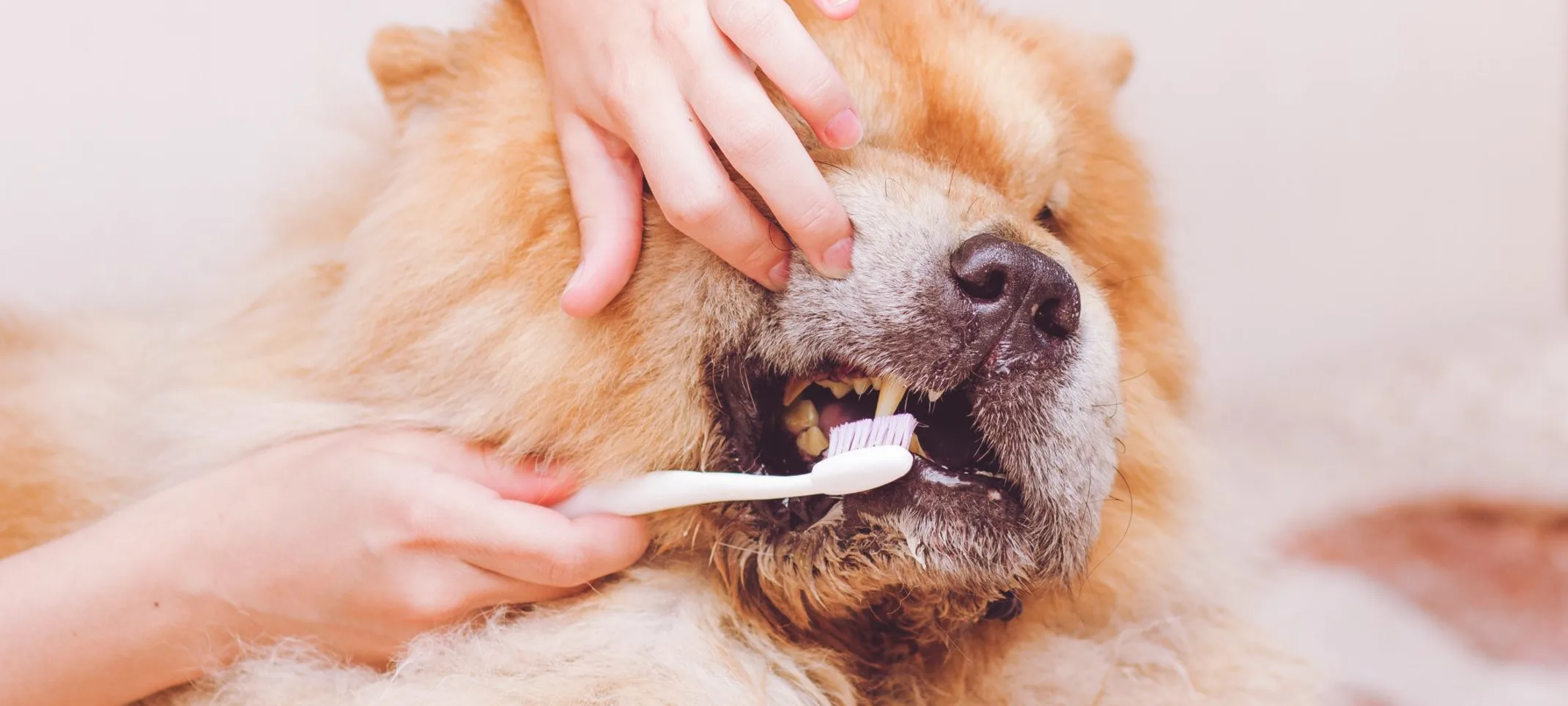Westside Animal Hospital
Dentistry
Annual dental exams and cleanings are recommended to protect your pet from many health problems and help them maintain a healthy and clean mouth.

Overview:
Dental disease is quite common in dogs and cats. In fact, it is one of the most common problems that we see in dogs and cats. Besides bad breath, dental disease can cause the following:
Drooling
Reluctance to eat
Pawing at the face or mouth
Dropping of food
Swelling of the cheek area
Lethargy
The problem begins with the formation of plaque — a bacterial slime that forms on tooth surfaces above and just below the gumline. Over time, plaque mineralizes and forms tartar — a much harder substance that cannot be brushed away. Tartar and bacteria below the gum line cause inflammation of the structures that support the teeth (periodontal ligaments), a condition known as periodontal disease. As inflammation progresses, these supportive tooth structures are lost. Teeth begin to loosen and decay. Besides being painful, this infection can travel to other parts of the body. Periodontal disease has been shown to be a risk factor for kidney, liver, and heart disease as well.
Dental Prophylaxis (Cleaning):
We commonly perform dental cleanings on dogs and cats. Veterinary dentistry requires anesthesia, but otherwise is very similar to human dental cleaning. Once your pet is asleep, the mouth and teeth are carefully examined for signs of disease that might not have been apparent on the initial physical exam. The teeth are then cleaned with an ultrasonic scaling device. Once all the tooth surfaces have been scaled, the enamel surfaces are polished smooth to help slow future tartar accumulation.
Sometimes we may find diseased or damaged teeth. We make every effort to save teeth that we feel have a chance to be successfully treated. In many circumstances, however, periodontal disease is so advanced at the time of presentation that treatment without extraction is unsuccessful. We only extract teeth that in the doctor’s opinion are beyond saving. A Registered Veterinary Technician cleans and polishes your pet’s teeth. The doctors do the exam and perform extractions, if required. We perform dental procedures in the morning. Your pet can go home later the same afternoon. We will discuss the condition of your pet’s teeth when you pick up your pet. We will also discuss home care and any additional therapy or medication that is needed. Your pet may act sleepy for several hours after returning home; this is a normal side effect of the anesthetic. Your pet should act normal by the following morning. We will provide you with instructions about feeding and home care when you pick up your pet.
More About Anesthesia:
We take any procedure involving anesthesia very seriously. The anesthetic drug protocol we use is customized on a patient-by-patient basis; in other words, we take all of your pet’s history, medical condition(s), and age into account when selecting an anesthetic regimen. The following are provided for all patients having a dental procedure performed:
Intravenous fluids - essential to maintaining proper blood pressure and ensuring adequate blood flow to the kidneys
ECG (electrocardiogram) - your pet’s heart rate and rhythm are monitored continuously
Blood pressure monitoring
Body temperature monitoring
Respiratory monitoring - monitored by an electronic respiratory monitor
Warm water circulating blanket - used to maintain your pet’s body temperature. We never use electric heating pads, which can cause severe thermal burns.
Sanos® Dental Sealant:
After the professional dental cleaning, and while your pet is still asleep, Sanos® can be applied to the pocket under the gum line (gingival sulcus) to help protect the difficult-to-reach areas such as the molars in the back of the mouth. Sanos® helps keep the gingival sulcus (where the battle against periodontal infection begins) free of plaque for six months. It is designed to extend the life of a professional dental cleaning when applied immediately following.
Home Care:
Home care can help reduce the frequency of the need for professional cleanings. We recommend brushing the teeth at home on a regular basis — ideally daily or at least several times per week. We will be glad to train you on proper brushing technique. After a professional cleaning is an excellent time to start brushing at home. Tooth brushing in cats can be more difficult. Some cat owners elect to use antibacterial mouth rinses applied with a cotton swab.
